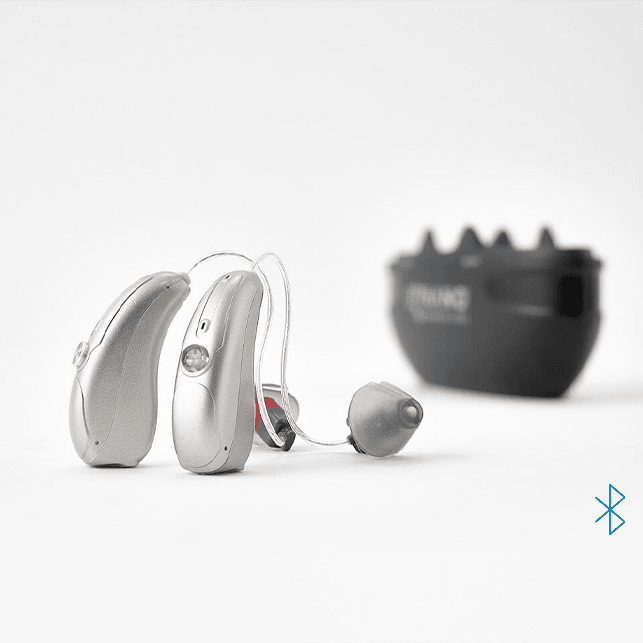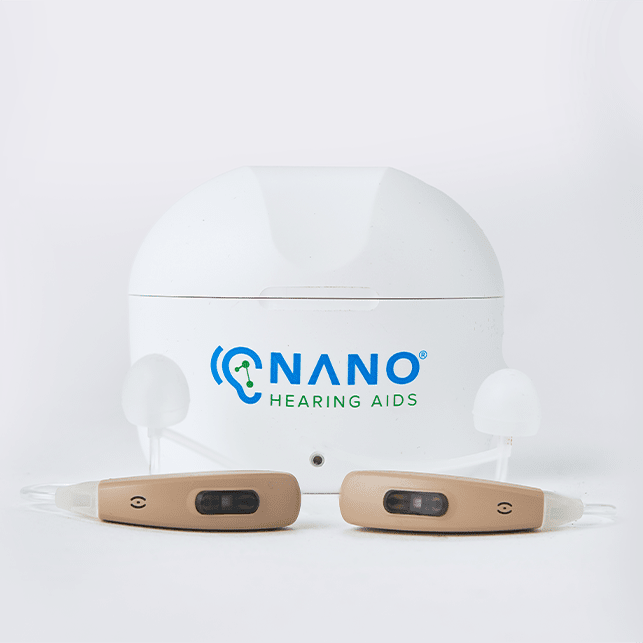Do you want to make sure your hearing aids last and stay in great condition? Cleaning hearing aids regularly and performing proper maintenance are some of the best ways to preserve them and ensure a clear and comfortable hearing experience.
We've put together a helpful list of tips on how to take care of your Nano OTC hearing aids to keep them in top shape, prolong their lifespan, and enhance their performance.
How To Care For Your Nano OTC Hearing Aids
Proper care for your Nano OTC hearing aids involves a few simple steps. These steps ensure your devices remain functional and provide you with the best possible hearing experience.
Shut Them Off When Not In Use
Turning off your hearing aids when you're not using them helps conserve battery life and keeps them in better working condition.
Store Them In A Dry Place
Moisture can damage most hearing aids. Store them in a dry place, such as a storage case or a dry container, to keep them free of moisture. Note that the Nano First Ear Plus ITE hearing aids have a built-in dehumidifier in their charging case.
Remove Hearing Aids When Showering To Prevent Them From Getting Wet
Water can harm your hearing aids, so make sure to remove them before showering, swimming, or any activity involving water.
Protect Against Heat And Humidity
Avoid exposing your hearing aids to excessive heat and humidity, as these conditions can damage the internal components.
Always Handle Them With Care
While hearing aids are powerful tools designed to enhance your hearing experience, their discreet design makes them small devices that require careful handling. They should never be dropped.
Avoid Placing The Hearing Aids Near Magnetic Objects
Magnets can interfere with the functioning of your hearing aids. Keep them away from any magnetic objects (such as tablets, magnetic clasps on jewelry, and magnetic fasteners on bags), to ensure they work correctly.

How To Clean Your Hearing Aids
Cleaning your entire hearing aid regularly keeps each one free of debris, moisture, and ear wax, which can affect performance. Here’s how to clean your Nano OTC hearing aids:
By incorporating consistent hearing aid maintenance into your routine, keeping your hearing aids clean, and using the appropriate hearing aid cleaning tools, you'll ensure your hearing aids remain in top condition.
Why Choose Nano OTC Hearing Aids
Many people with perceived mild to moderate hearing loss have found Nano OTC hearing aids beneficial for improving their hearing. These FDA-regulated devices do not require a prescription, hearing exam, or doctor's appointment. You can try them in the comfort of your home, adjusting the volume to suit your specific needs.
With Nano OTC hearing aids, you simply select the best dome size for your ears, turn them on, and place them in your ear canal. Please note it might take several days or weeks for your ears and brain to get used to them.
All Nano OTC hearing aids come with a 45-day money-back guarantee and free 24/7 lifetime support, ensuring you have ample time to experience the benefits.
OTC Hearing Aids For Perceived Mild To Moderate Hearing Loss
Many people with perceived mild to moderate hearing loss have found it beneficial to wear hearing aids that are OTC, as they can be a great solution for improving hearing. These FDA-regulated devices don't need a prescription, hearing exam, or doctor's appointment. You can try them in the comfort of your home, and you can adjust the volume to suit your specific needs. With Nano OTC hearing aids, you simply pick the best dome size for your ears, turn them on, and put them in. Keep in mind it might take several days or weeks for your ears and brain to get used to them, which is why Nano OTC Hearing Aids comes with a 45-day money-back guarantee and free 24/7 lifetime support.




